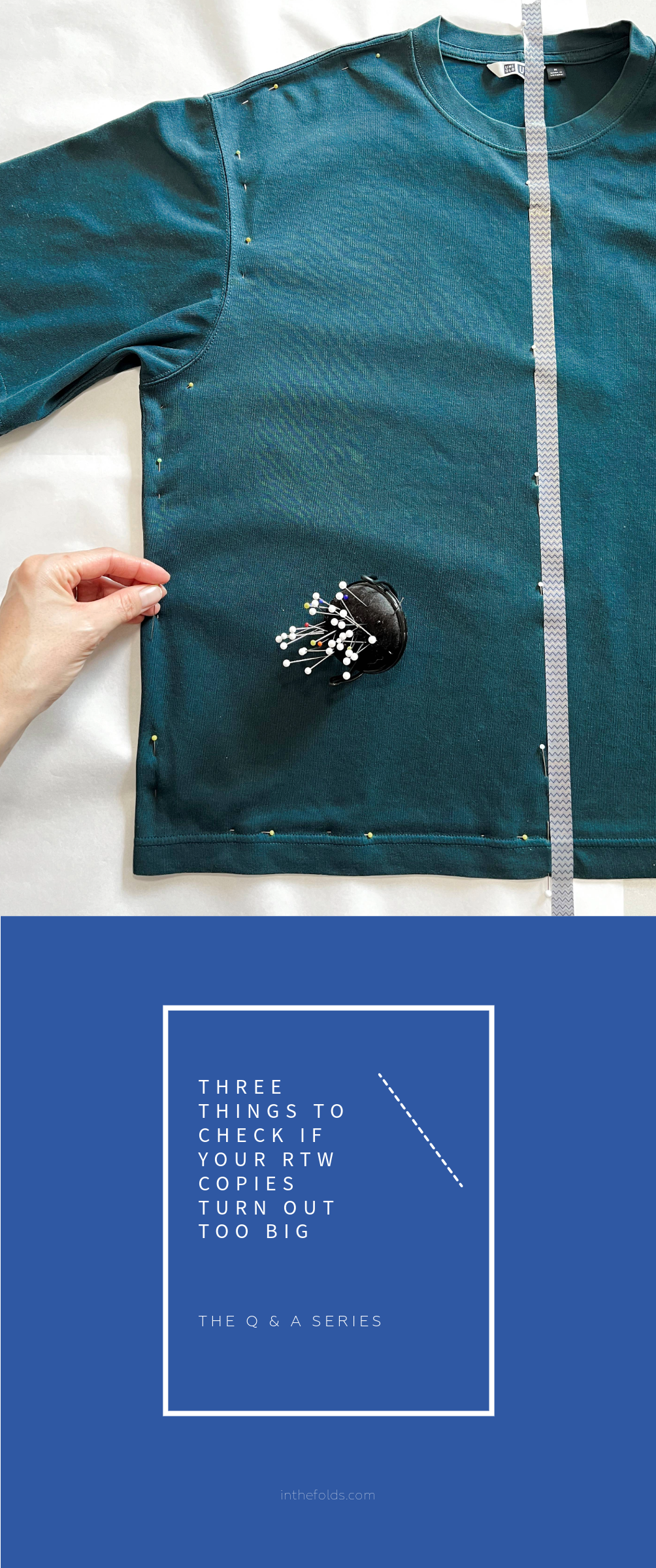THE Q & A SERIES
three things to check when
copying rtw garments
I love that you covered creating a pattern by copying an existing garment. I have done this a few times - sometimes it works, sometimes it comes out too big. What am I doing wrong?
Thanks,
Carrie
Hi Carrie,
Thanks for reaching out!
It's great that you've tried copying garments before. It can be such a useful skill, but it does take some trial and error to get accurate results.
If your copied garment sometimes comes out too big, here are a few things to check:
1. Seam lengths
After tracing, measure the seam lengths on your pattern and compare them to the original garment. If they don’t match, there may have been slight distortions while tracing or transferring the pattern.
Check the traced pattern pieces against your original RTW piece to see if you can figure out where you went wrong. If you can, alter the fabric pieces you’ve cut out. If this isn’t possible, you will need to retrace the pattern pieces from the RTW garment, taking extra care to ensure the RTW garment is laying flat.
2. Fabric type
The original garment's fabric might have different stretch, drape, or thickness compared to what you're using. This will affect the finished result of the copied garment, and it may not fit or fall the same way as the original RTW piece.
When you’re just starting out copying garments, I recommend using fabrics that are similar to those used in the the RTW piece. This way, you know you’re eliminating one potential problem area. Once you get more confident with the process and you’re happy with how your copied garments are turning out, you can get more adventurous!
3. Seam allowances
Always double-check that your seam allowances are consistent. If you marked them on the pattern but then sew with a smaller allowance (which is so easy to do, especially if you’re rushing from excitement at what you’re doing!), the final garment will end up bigger.
If you’re able to pinpoint the issue using these steps, you should get more consistent results in the future!
Let me know if you need more help. Or, check out our Copy Your Clothes Skills Kit. It covers the exact tools and techniques required for copying RTW garments (plus how to use them), and then shows you how to apply them to garment of increasing complexity - a basic T-shirt, a button-up shirt and pants.
Happy patternmaking,
Emily
RESOURCES MENTIONED IN THIS ISSUE
The Copy Your Clothes Skills Kit is part one of our Copy Your Clothes Series. Available here.
For more issues of the Q & A series, you can check out the archive here.
WHAT YOU’VE BEEN MAKING
Jacob dress made by @shuaychong



































